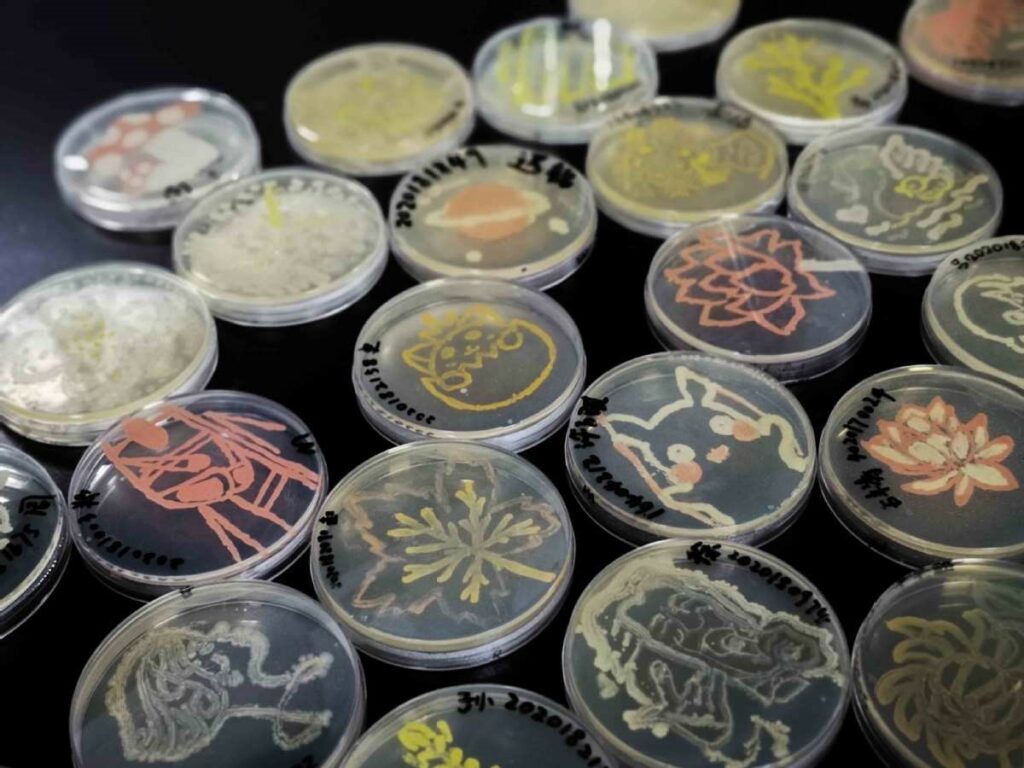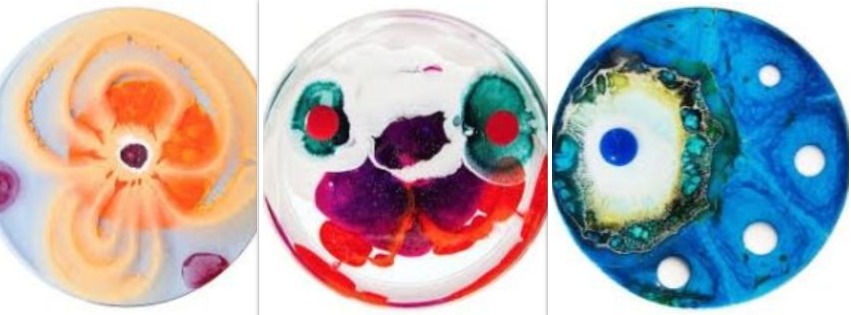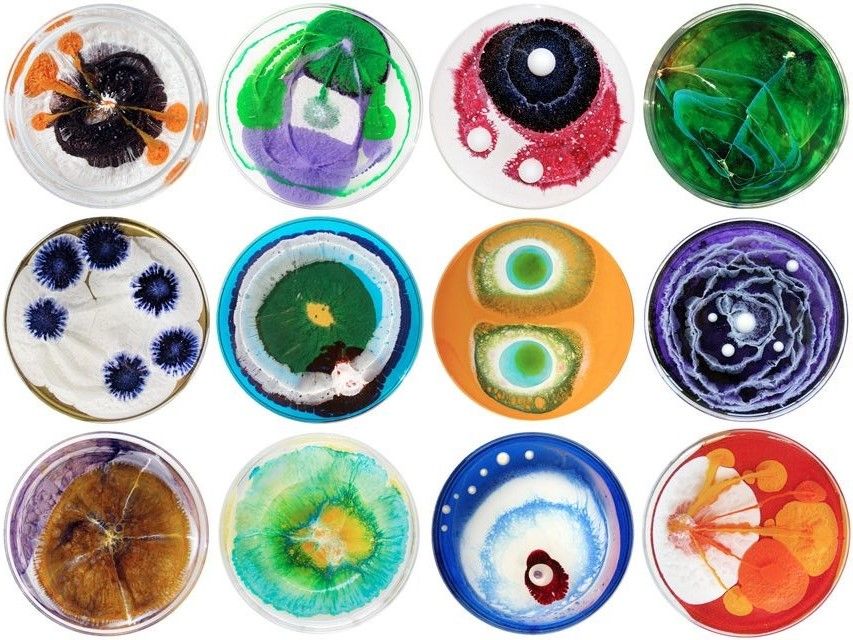“Put life into your artwork!”
Students at the Pharmaceutical University of Nanjing, East China took these words of inspiration way too literally!
By taking different colored strains of bacteria and placing them in Petri dishes, students created microbial masterpieces for an art competition arranged in November 2018.

Now, this practice has become a whole ‘art’, where schoolchildren are introduced into the world of microorganisms in a fun and colorful way! Here are some interesting pictures which take you into a world where biology and creativity beautifully merge.
Yeast species – which are fungi – used include Saccharomyces cerevisiae (yellow-white) Aspergillus flavus (yellow-green spores), Aspergillus ochraceus (yellow), Aureobasidium pullulans (black), Candida albicans (whitish buff), Candida sake, Candida sp. (whitish), Cladosporium herbarum (brown to black), Cladosporium resinae, Epicoccum nigrum (yellow, orange, red, brown, and black), Fusarium sp., Rhodotorula sp., and Scopulariopsis brevicaulis.[5][a]
Protist species used include Euglena gracilis (photosynthetic, green) and Physarum polycephalum (yellow-green).

Agar plates are used as a canvas, while pigmented or fluorescent bacteria and yeasts represent the paint. In order to preserve a piece of microbial art after a sufficient incubation, the microbe culture is sealed with epoxy.
A technique called “bacteriography” involves selectively killing certain areas of a bacterial culture with radiation, in order to produce artistic patterns. After incubation, the culture is sealed with acrylic.
One really wishes after seeing these artistic pieces that universities in Pakistan also adopt such learning activities. It would really help in developing students’ interest in science!

The American Society for Microbiologists hosts an annual contest for microbial art: Agar Art. The 2015 edition covered 85 submissions, of which microbial art created by Mehmet Berkmen and Maria Peñil called Neurons won first place. They have been working together since 2011 on making bacterial art. The artwork used yellow Nesterenkonia and orange Deinococcus and Sphingomonas.
Also Read: Artificial Intelligence is on its way to conquer the art scene

Aniqa Mazhar is a graduate of QAU in Biochemistry. She has taught sciences to O levels and is currently planning for her MS in Food Technology. Aniqa’s hobbies are reading, watching movies, writing, calligraphy, long walks, and nature photography.

